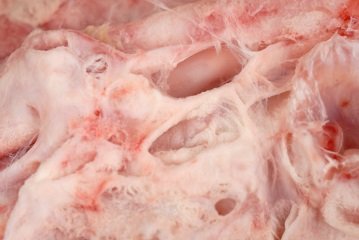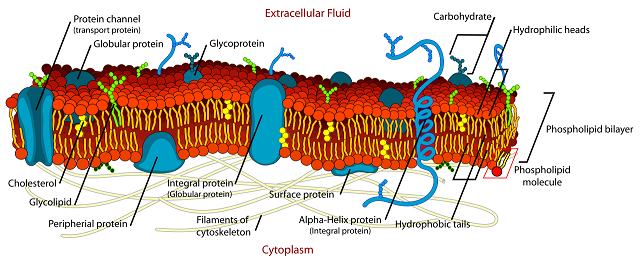Nanotechnology #2 - Nanotechnology In Cancer: An Overview
There are many problems the human race has to face. Energy, resources, waste, cancer - just to name a few. Scientists are working hard to find new creative approaches to these problems. One of these solutions is to think in very small units. The result lies at the intersection of physics, engineering, chemistry and biology. Nanotechnology has tremendous potential.
Nanotechnology is the idea that we can create devices and machines all the way down to the nanometer scale, which is a billionth of a meter, about half the width of a human DNA molecule.
-Paul McEuen
Other posts in this series:
Nanotechnology #1 - Introduction
Today´s post will focus on the use of nanotechnology in the treatment and detection of cancer. This is a very interesting topic and I hope that I can show to you some advances in nanotechnology. I hope you enjoy this post.
Nanotechnology In Cancer Therapy
The main use of nanotechnology in the treatment of cancer is drug delivery to very specific sites, namely tumor cells (1). There are progressively more nanomaterials that can be used for this purpose which have increased cancer selectivity, changes in pharmacokinetics, amplification of cytotoxic effects, and simultaneous imaging capabilities (2). A big problem in the development of drugs is water insolubility of certain drugs, which decreases bioavailability and causes other problems (3).
Nanoparticles can help to overcome this problem by encapsulating water-insoluble drugs (3). One such technique is a lipid−polymer hybrid nanoparticle, which is made by self-assembly through a single-step nanoprecipitation method in a reproducible and predictable manner, which may make this drug-delivery system suitable for industrial production (4). Another possible improvement that is offered by nanotechnology in cancer treatment is the transport of multiple anti-cancer agents and the simultaneous release of such which could result in better coordinated synergistic effects and thus improved success rates (1). However, the simultaneous delivery of therapeutics using nanotechnology (or any drug-delivery method) is difficult, as the effects of the first drug must not negatively impact the effects of the second drug (1). Here is an example. Anti-angiogenesis agents can prevent the formation of new blood vessels by tumors (thus decreasing tumor growth by restricting blood supply), which means that the dose of anti-tumor agents reaching the tumor decreases (due to decreased blood transport to the tumor cell), while also triggering the overexpression of a transcription factor that causes the tumor to be more inversive and resistant to chemotherapy (5). This shows that the chronology of drug administration needs to be carefully orchestrated. Nanomedicine approaches to cancer rely on a principle called Enhanced Permeability and Retention Effect, which means that larger molecules can enter the space between blood and vascular tissue and remain there due to suppressed lymphatic filtration (6).
The problem with that is that the effect is not the same in all kinds of cancers. This is another reason that the current development in cancer treatment tend to be more personalized and based on the genetics of the individual´s tumor (7). Nanoparticles may also be used as mediators of anti-cancer medication and technology. Mesoporous-silica–coated upconversion fluorescent nanoparticles are able to convert depth penetrating near-IR radiation into radiation composed of wavelengths in the visible regions, which would aid in the use of conventional photodynamic therapy (which has been limited by the low depth penetrating ability of visible light) (8). Nanoparticles can also be heated by a radio-frequency magnetic field. This heating effect is very localized without observable toxic effects (9). However, I need to add that this approach has only been used in the activation of neurons, as per the source. It seems that this may be transferrable to cancer therapies in the future (1). There are efforts to make more specific nanocarriers that can be used for "active targeting". In this approach nanoparticle surfaces are altered to incorporate molecules to selectively bind and target cancer cells (10). While this has sparked tremendous research interest, there are still many problems to be overcome. Non-specific interactions with organs and tissue still leads to reduced efficiency and possible toxicity (11).
So here a small summary.
- Nanoparticles are used as drug-delivery systems in passive targeting
- Multiple drugs can be transported by one carrier
- The release of multiple drugs need to be coordinated to ensure efficiency
- Nanoparticles can act as mediators to overcome previous limitation in cancer therapy
- Active targeting may enable very site-specific drug delivery
- There are still problems that prevent even greater use of nanotechnology in cancer therapy
Nanotechnology And Diagnosis Of Cancer
It is commonly know that early detection of cancer can lead to higher rates of survival. If detected early corectal cancer has a 5 year survival rate of 93% compared to only 6.6% if detected late (12). For more cancer statistics pleas see this article. We can agree that early detection of cancer is desirable as it offers a greater chance to survive. Nanomaterials seem to be very useful in the design of better diagnostic tools. A team of scientists reported the development of a Copper metal-cluster that was able to precisely and specifically mark the nuclei of HeLa and A549 cells (13). Nanoparticles may even be engineered to just recognize the environment of a tumor. A hybrid ferritin nanocage-based fluorescence optical probe was able to penetrate into blood vessels of tumor and to become active upon exposure to a tumor specific protein (14). There are obviously some problems with this technology. As stated earlier, there are possible interactions of nanoparticles with tissues and molecules in the body that can lead to inactivation and toxicity (15).
My Opinion
I did have a few expectations when I started researching for this topic. For example, I was aware of nanoparticles that were used as drug-carrier systems. However, the extend to which research has advanced was just amazing. I was excited to see how broad the potential applications of nanotechnology in cancer therapy and diagnosis are. We have already witnessed the commercialization of the first generation of nanotechnology-based cancer therapeutics. Drugs like Abraxane and Doxil have been used as a cancer therapeutic. Another thing that became evident during my research was that there are still big problems that need to be overcome, like non-specific interactions of the nanoparticles with proteins, cells and tissue. It is also not very well understood how nanoparticles will interact or stimulate the immune system. Another problem, one of regulatory nature, is that the definition of nanomaterials is lagging and that the safety procedures are not yet well established (16). However, the US Food and Drug Administration has established a taskforce to fill the gaps (17). These are exciting days. We are witnessing the discovery of a missing piece of the puzzle that may eventually lead to the eradication of cancer. This is a very optimistic statement, though, because there are still many challenges that need to be overcome. Nanotechnology will not immediately revolutionize cancer diagnosis and treatment and it will take more research and time.
Shameless Self-Advertisement
Thank you very much for reading today´s post. I spent a lot of time researching for this post, but there is no way that I can cover every new development. If you have something to add, please do so in the comments. Please use scientif sources so we all can profit! :)
Please upvote and resteem if you liked this post. You may also like some of my other content so feel free to check out my blog!
As always,
Cheers @lesshorrible!



This is a test comment, notify @kryzsec on discord if there are any errors please.
Being A SteemStem Member
Medical treatment is, of course, one of the most popular applications for nanotechnology, but it surely isn't the only one. I'm thinking of enhancement of the human body, the reduction of environmental pollution or the development of more efficient materials for space travel.
I'm quite curious, what you are thinking about the overall use of nanotechnology. Especially its impact on societies - or do you want to focus on the scientific challenges alone?
Hey @egotheist. I am planning a series on nanotechnology so there will be more posts writing about different applications of nanotech. Today ´s post was about applications in cancer. Haven´t decided about next week´s topic. Thank you for your comment. Cheers!
@lesshorrible
I am wondering if there are any nanoparticle system where the particles can specifically detect and destroy harmful bacterial membrane and destroy them. Recently I was reading and writing about Antimicrobial peptides (and their synthetic counterparts) which may help in fighting against antibiotic resistance problem of bacteria :)
Hey @dexterdev. I do believe that I heard about this and this may be a topic I will write about in this series. I am focusing on one topic in each post. Thank you very much for the input. I will go and read your post, it sounds interesting. Have a good day, Cheers!
Nano carriers is a great technology. It reduces the after effects of chemical therapy. There is close friend of mine whose dad undergone the chemo therapy, he has now profound adverse effects on his body. Something very disturbing to see. The tech mentioned here has strong potential to change the way treatment is done for patients. I hope to see this in future.
Hey @cleanenergy, thank you very much for sharing your experience. You know, it is one thing to read about statistics and derive conclusions and predictions from it, but a whole other to hear about people who were actually impacted. Thank you again. Cheers!
I really appreciate the fact that you took your time to research and share thiz with us.. This is such a great content.. Thanks for sharing @lesshorrible
Thank you for your comment. Next time I would appreciate if you also upvoted my post if you liked it that much. Cheers
just awesome post ...informative one..
now a days nano technology is very effective in medical science...by this technology science has invented a lot of advantage for us..in chemical science it also succesful..But your info is carrer in nano..what an innovative idea. @lesshorrible
excellent publication friend, I'll follow you